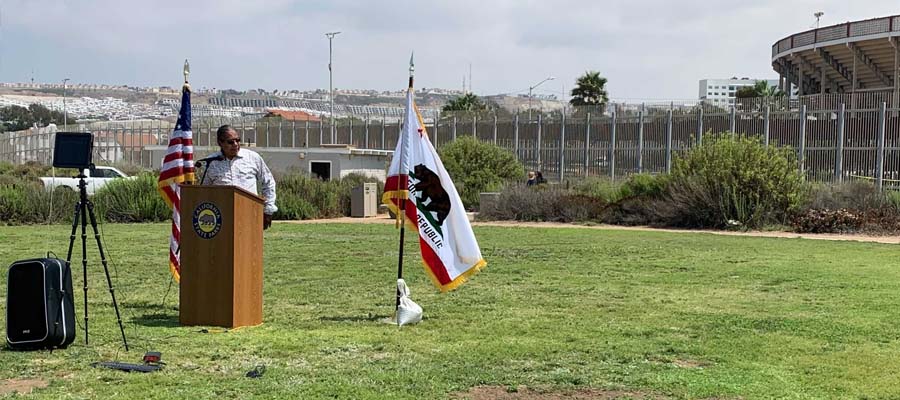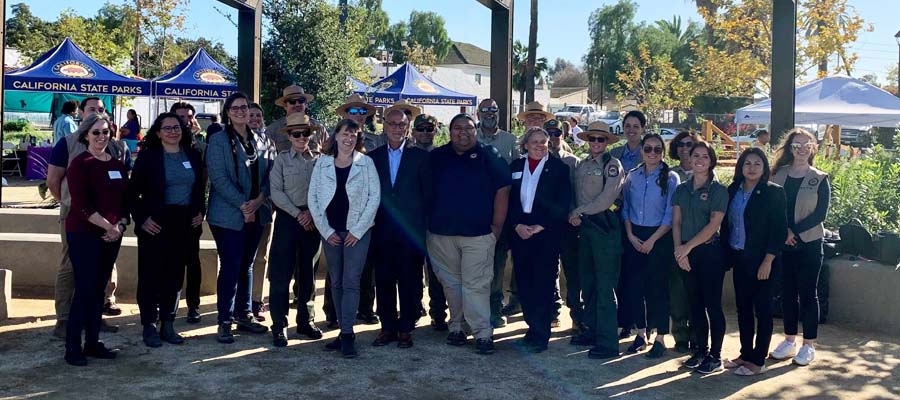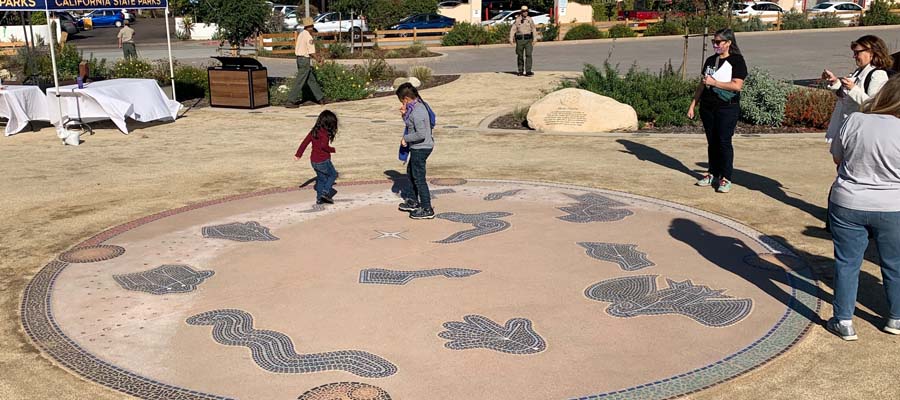At California State Parks Foundation, we believe that parks are essential to health, happiness, and quality of life for all Californians. However, we must acknowledge that California state parks are built on homelands of Indigenous peoples, who were forcibly removed in part due to a failure to ratify treaties back in the 1850’s.
This and many other legacies of colonialism manifest today in the continued erasure of Indigenous history and current presence, in parks and throughout California. Still, we are encouraged by the work that California State Parks has begun through the Reexamining Our Past Initiative to review contested park names, interpretation of history, and more.
While there is still a lot of work to be done, we have been thrilled to partner with California State Parks on important recent actions to center and amplify the stories of Indigenous peoples. In partnership with Border Field State Park and Old Town San Diego State Historic Park, we are working to honor the sites, stories, and ideas that represent and reveal the wisdom, contributions, and experiences of the First People, the Kumeyaay.
On August 21, 2021, Border Field State Park celebrated its 50th Anniversary with a special event on Monument Mesa – a part of the park which is right along the border between the U.S. and Mexico. Several California State Parks Foundation staff attended this event which included remarks from California State Parks Director Armando Quintero, Dr. Stanley Rodriguez from the Iipay Nation of Santa Ysabel, and Mayor of Imperial Beach Serge Dedina.
The 50th Anniversary event was also the launch of Divided Together, sponsored in part by California State Parks Foundation. This project consists of four podcasts and a self-guided digital audio tour – both of which help connect visitors to Border Field State Park while there is limited in-person programming due to COVID-19. The vision for this project came from Kumeyaay consultation as well as public input at meetings to capture the community’s vision for the Border Educational Plaza.
The podcast has four episodes: Kumeyaay Nation Divided by the Border, Scientists and Geographers Working Across Borders, Indigenous Land Use Practices, and Human Rights Along the Border. Following the U.S. Mexico War, in 1849 the U.S. and Mexico placed a border at the Monument Mesa site that created multiple separations: a political border with growing physical barriers, a divide in language and ideology, barriers between natural habitats and processes, and the division of the Kumeyaay Nation. At the same time, the place is undeniably united by geography, hydrology, air basins, habitat, cultures, and family ties. The podcast explores the unique challenges and opportunities created by this cross-border relationship.
Next, we sponsored and attended Old Town San Diego State Historic Park’s opening ceremony for the new Iipay~Tipai Kumeyaay Mut Niihepok, or Land of the First People, exhibit on October 26, 2021. This 2.5-acre addition to the park transformed the site of a former Caltrans office into a dedication to the First People, the Kumeyaay. The project took 20 years of visioning and planning in partnership with the Kumeyaay Nation, state agencies, elected officials, and community stakeholders.
The beautiful grand opening event began with remarks from California State Parks Director Armando Quintero. He underscored the importance of the day, sharing that “we’re not just transforming the former Caltrans building that used to sit right where we are, we’re expanding the footprint of the Old Town San Diego State Historic Park to the historic alignment of the San Diego River. And most importantly, what we’re doing is honoring the culture of the Kumeyaay Nation and their enduring relationship with the San Diego River which flowed near what is now known today as Old Town San Diego.”
Following Director Quintero, the program included a Kumeyaay blessing by tribal elders and a lovely performance of the bird songs of the Kumeyaay Nation. The honored speakers of the day represented the many partnerships that made this new exhibit possible – Senate President pro Tempore Toni Atkins, Former Senator Christine Kehoe, Chairwoman Angela Elliott Santos from the Manzanita Band of the Kumeyaay Nation, Mr. David Toler from the San Pasqual Band of Mission Indians, and Mr. Johnny Eagle-Spirit Elliott from the Manzanita Band of the Kumeyaay Nation.
Chairwoman Santos asked the event’s attendees to take a moment of silence for the Kumeyaay ancestors who endured so much pain throughout their history. She powerfully spoke of her reflections on Kumeyaay life in this area of abundance and beauty – and how her “thoughts always turn to the time of change for them, the time of enslavement and even death.”
While we cannot undo this dehumanization and severe mistreatment of the Kumeyaay, the new exhibit brings to light their humanity and deep connection to the land. Chairwoman Santos noted that this new portion of the park “tells the world that even though [the Kumeyaay] have had a devastating past, [they] are still here and [they] are thriving again.”
These projects are a step toward becoming more equitable and inclusive in our parks, our communities, and as Californians. California State Parks Foundation is making it a priority to honor the history and culture of California by preserving and honoring sites, artifacts, stories, and ideas that represent and reveal the wisdom, contributions, and experiences of everyone who has called California home. To hear more about our ongoing work to create a park system that is welcoming and accessible to all, follow us at calparks on Instagram and Twitter and California State Parks Foundation on Facebook.


